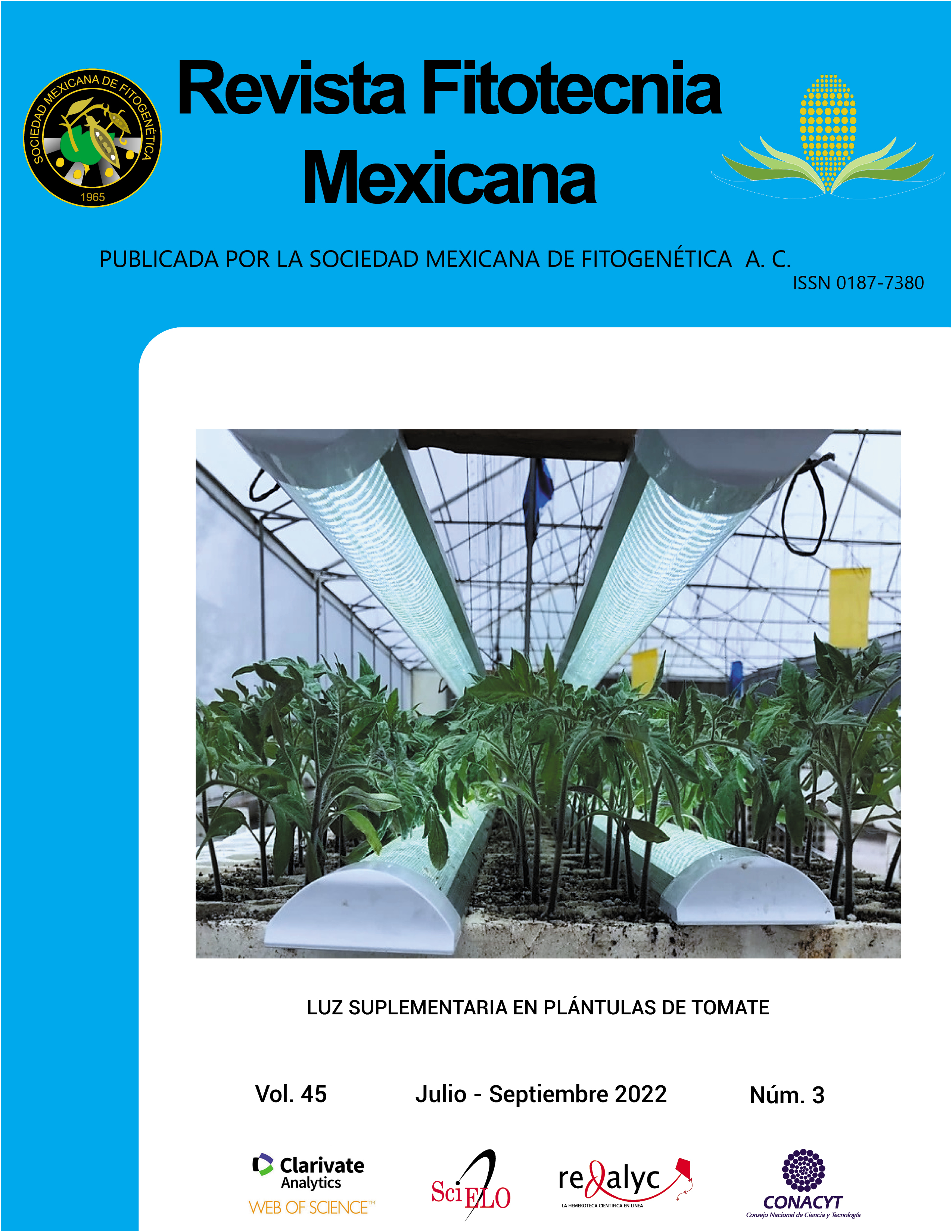NUTRIENT EXTRACTION BY AMARANTH (Amaranthus hypochondriacus L.) NUTRISOL VARIETY
Main Article Content
Abstract
Amaranth (Amaranthus hypochondriacus L.) is a crop with agronomic and nutraceutical importance; however, information is scarce on its needs for soil fertility, nutrient demand and nutrient extraction throughout the crop cycle. This study generated the nutrient extraction curve of the amaranth Nutrisol variety. The Valley of Mexico Experiment Station of INIFAP, located in Coatlinchán, State of Mexico, housed the study. The concentration of N, P, K, Ca and Mg was determined in eight samplings in stem, leaf, inflorescence and grain. Considering a field population density of 135,000 plants ha-1 and a yield of 4.6 Mg ha-1, and from the nutrient concentration and the plant structures dry weight, extraction per hectare was calculated. At physiological maturity, element extraction was determined in the following order (highest to lowest, kg ha-1): K (896), N (395), Ca (270), Mg (231) and P (79). The amount of nutrients needed to produce a ton of grain (kg ha-1) was K (195), N (86), Ca (59), Mg (50) and P (17). The period of most significant demand for all the elements was 82 to 123 days after sowing, coinciding with the phenological stages of maximum vegetative growth, flowering and grain filling. At the end of the production cycle, 30 % of N accumulated in the inflorescence and 20 % in the grain. Likewise, 31% of the P accumulated in the inflorescence and 32% in the grain. Of the remaining elements, 57 % of K accumulated in the stem, while 55% of Ca and 49 % of Mg remained in leaves.

